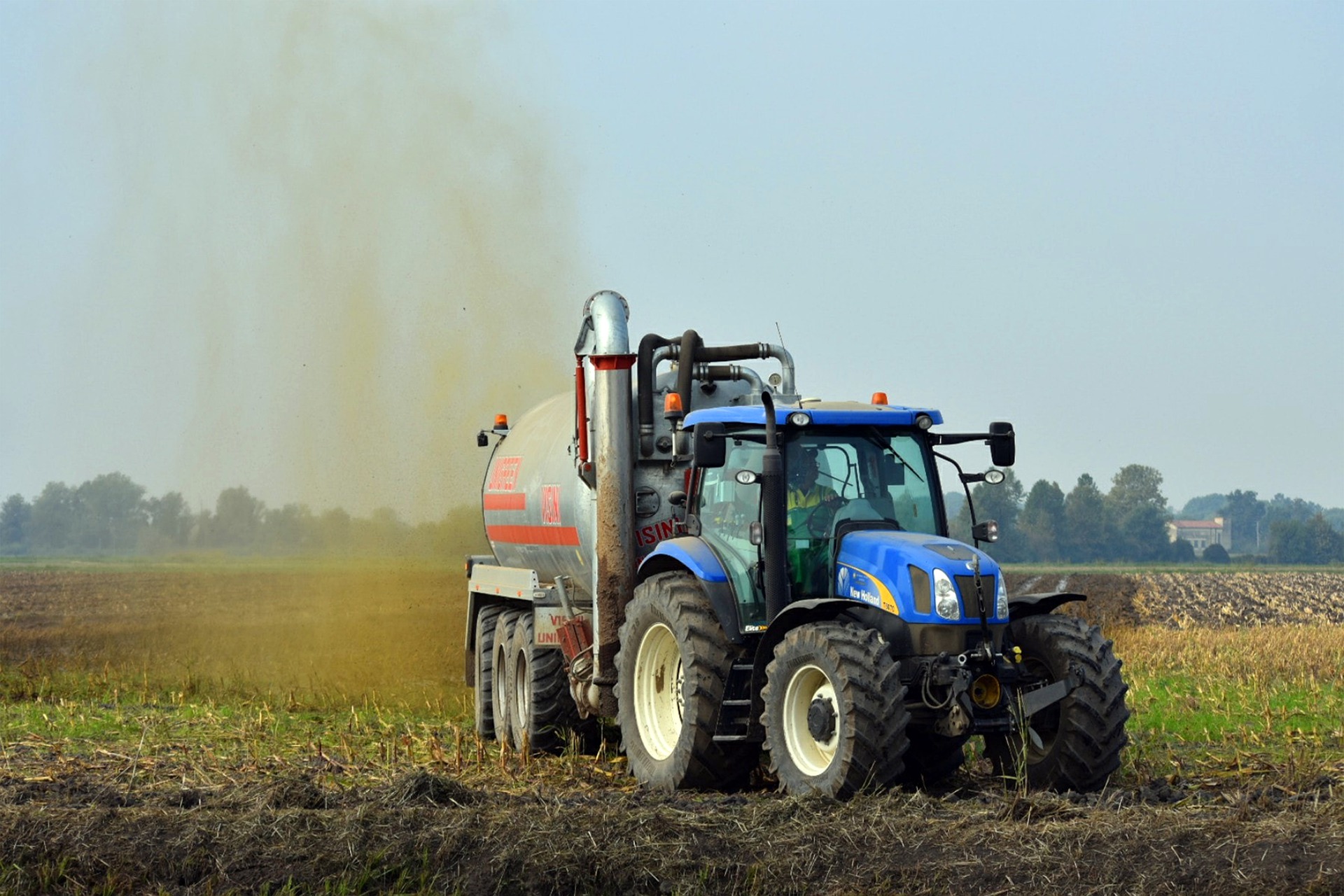Risks of Cross Contamination Via Shared Equipment on Mixed-Use Farms
Breanna Hannula, Produce Safety Technician
![]()

A farm that raises livestock and grows produce faces challenges that a solely produce operation does not. Animals are a major source of fecal contamination that can present danger to raw produce. When equipment is shared in different areas of the farm, it is important to consider cross contamination. However, it is possible to safely grow produce when livestock are nearby, so long as basic principles of produce safety are followed.
The first step is to maintain complete physical exclusion of the animals from the produce areas. Sturdy and permanent fencing that is suitable for the type of animal contained is crucial. Bored or hungry animals will test fencing to seek the ever greener grass on the other side.
Second, when performing chores and tasks, the worker should take careful steps to prevent contaminating the produce areas with animal feces. Separation is key. “Two pairs of boots” is the overarching recommendation. Clothing, gloves, boots, and PPE that is worn in livestock areas should not be worn in produce areas without first being cleaned and sanitized. Considering the amount of fecal matter contacted, workers are better off having two pairs of boots with each pair clearly designated for which tasks the boots will be worn for. Handwashing between livestock activities and produce is also essential.
The third consideration is to be aware of machinery usage. Contaminated equipment can easily act as a vector to spread fecal matter. The bucket implement on a front-loader tractor has seemingly endless uses. On a non-produce farm, the risk is minimal. When the usage interacts with raw produce, this is where problems may arise.
Consider a three-bay aerobic compost system. Raw manure is added to the first pile. The second pile is actively monitored and turned to comply with pathogen reduction standards. The third pile is given adequate time to cure. Once cured, the finished compost is considered a treated soil amendment and is therefore a low risk practice. Pathogens present in the raw manure are effectively eliminated when composted in a scientifically validated process. However, if the same bucket that is used to add raw manure to the first pile and is then used to scoop finished compost from the fully cured pile, the cured compost is no longer “treated,” as it has been contaminated with raw manure. This is where the danger lies, because if the person applying the contaminated compost acts as though the compost is low risk, they may apply it in a manner that contaminates the produce.
Additionally, the tires can act as a vector. Consider the following scenario. The tractor was driven into a pen to scoop manure, where the tires pick up manure on the treads. The tractor is then driven into the apple orchard and small piles of manure fly off and land on the ground as the tractor drives. Harvester crews walk through the orchard and walk through the manure. A harvester climbs up and down the harvest ladders, now each rung is contaminated by manure. The harvester places their hands on the rungs to climb up the ladder, then reaches and picks an apple. The apple is now contaminated with raw manure, even if there is no visible evidence.
The most clear and safe option is to have separate machinery designated for each task. The livestock tractor is exclusively used for tasks where it will contact raw manure, i.e. pen cleaning, feeding, and turning the unfinished compost pile. The produce tractor is solely used in the growing and harvesting of the farm’s produce. If multiple machines are not available, then investing in separate buckets for the front loader is a valuable first step.
If one machine with one bucket is the only option, integrate a thorough cleaning and sanitizing SOP of the exterior and any surfaces that the operator may touch as well. This should be documented in a sanitation log. Multiple-user equipment may wish to implement a log that details what task the equipment was used for in addition to the cleaning log.
Additionally, the grower should plan for potential contamination. What actions should be taken if the produce tractor is contaminated? What will be done if a contaminated tractor is driven through the produce field? Write these procedures and post them in a visible area in addition to the tractor sanitation SOP.
Mixed-use farms present unique challenges to growing safe produce. However, the challenges can be mitigated with careful planning and recordkeeping.



 Print
Print Email
Email